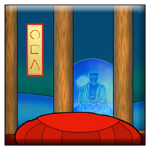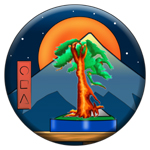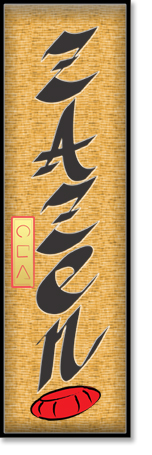On The Way: The Daily Zen Journal
Reaching the Fundamental Ground
Muso Soseki (1275-1351)

Since the fundamental ground is neither a feature of the world nor a transmundane phenomenon, many people who want to practice Zen wonder how it can be reached. This question itself, however, indicates a failure to digest the implications of the term fundamental.
If you associate the fundamental with a worldly art, then you will wonder what skill or technique you should learn in order to attain it. If you suppose the fundamental to be a transmundane phenomenon, then you will wonder how you can realize it without knowledge.
Once you have heard of what is neither a mundane nor a transmundane thing, you are foolish to wonder how to reach it. To reach the fundamental ground is not something like going from the country to the city or from one land to another. In reality, it is like waking up from a dream.
All the questions about where the fundamental ground is and how to get there are part of the dream, arising from the thoughts of a dream about a dream.
Even if you have not awakened, if you realize that your perceptions and activities are all like dreams and you view them with detachment, not giving rise to grasping and rejecting discrimination, then this is virtually tantamount to awakening from the dream; at least you may be said to believe in the existence of reality.
In the fundamental ground, there is no sign of ordinariness or sainthood, no purity or defilement. Because of the “dream” of consciousness conditioned by unconscious habit, purity and defilement appear in the midst of formlessness, and one sees the distinctions between the ordinary and the holy in the midst of the uncreated.

When you think you are an ordinary mortal, you go running around after honor and gain, disappointed if you do not get them. When you think you are wise, you look down on everyone and develop a conceited attitude. When you are fooled by such delusions you do not even believe in the existence of a fundamental ground of peace and happiness, let alone experience it.
The Complete Enlightenment Sutra says, “People mistake the material elements for their own bodies and take reflections of the objects of the six senses for their own minds. This is like diseased eyes seeing flowers in the sky, or a second moon. This is why they arbitrarily pursue the repetitious routines by which they live and die. This is called ignorance.

“Ignorance has no real substance; it is like seeing someone in a dream. It is not that there is no presence, but on awakening, that person is not there.”
The Heroic Progress Sutra says, “The subtle essence is complete clarity beyond all name or description. Originally there are no worlds, no sentient beings.” All the Universalist Buddhist scriptures speak in this vein; why disbelieve in this and instead wear out your body and mind in external seeking?

Activity and Meditation
People meditating on the fundamental carry out their ordinary tasks and activities in the midst of meditation and carry out meditation in the midst of ordinary tasks and activities. There is no disparity between meditation and activity.
It is for those as yet incapable of this, those weak in focusing their intent on the Way, that special meditation periods are set up. The practice of meditating four times a day in Zen communities began in this manner before the twelfth century.
People who really have their minds on the Way do not forget work on the fundamental no matter what they are doing. Yet if they still distinguish this work from ordinary activities even as they do them together, they will naturally be concerned about getting distracted by activities and forgetting the meditation work. This is because of viewing things as outside the mind.

An ancient master said, “The mountains, the rivers, the whole earth, the entire array of phenomena are all oneself.” If you can absorb the essence of this message, there are no activities outside of meditation: you dress in meditation and eat in meditation; you walk, stand, sit, and lie down in meditation; you perceive and cognize in meditation; you experience joy, anger, sadness, and happiness in meditation.
Yet, even this is still in the sphere of accomplishment and is not true merging with the source of Zen.
Muso Soseki (1275-1351)
Excerpted from Dream Conversations On Buddhism and Zen – Muso Kokushi trans by Thomas Cleary 1996





“People meditating on the fundamental carry out their ordinary tasks and activities in the midst of meditation and carry out meditation in the midst of ordinary tasks and activities. There is no disparity between meditation and activity.“
This sums up the crux of a meaningful koan for us today. How we get there is truly up to each one of us, and each person has their own unique pathway. This is where it gets very creative – to make the leap from following a traditional way, which is necessary in the beginning even to learn the process of meditation, and translate it into an experience that brings practice alive in the present moment.
This is akin to the parable of the raft in Buddhism; we use the raft (teachings) to get to the other side of the river and then after arrival, we leave it behind. Consider this an expedient until meditation and activity are fully wedded in your being. At some point the expedient or reminder to return becomes unnecessary; until then most of us will need a reminder that springs from our heart/mind.
“Even if you have not awakened, if you realize that your perceptions and activities are all like dreams and you view them with detachment, not giving rise to grasping and rejecting discrimination, then this is virtually tantamount to awakening from the dream; at least you may be said to believe in the existence of reality.“
Waking up in the Present,
Elana, Scribe for Daily Zen